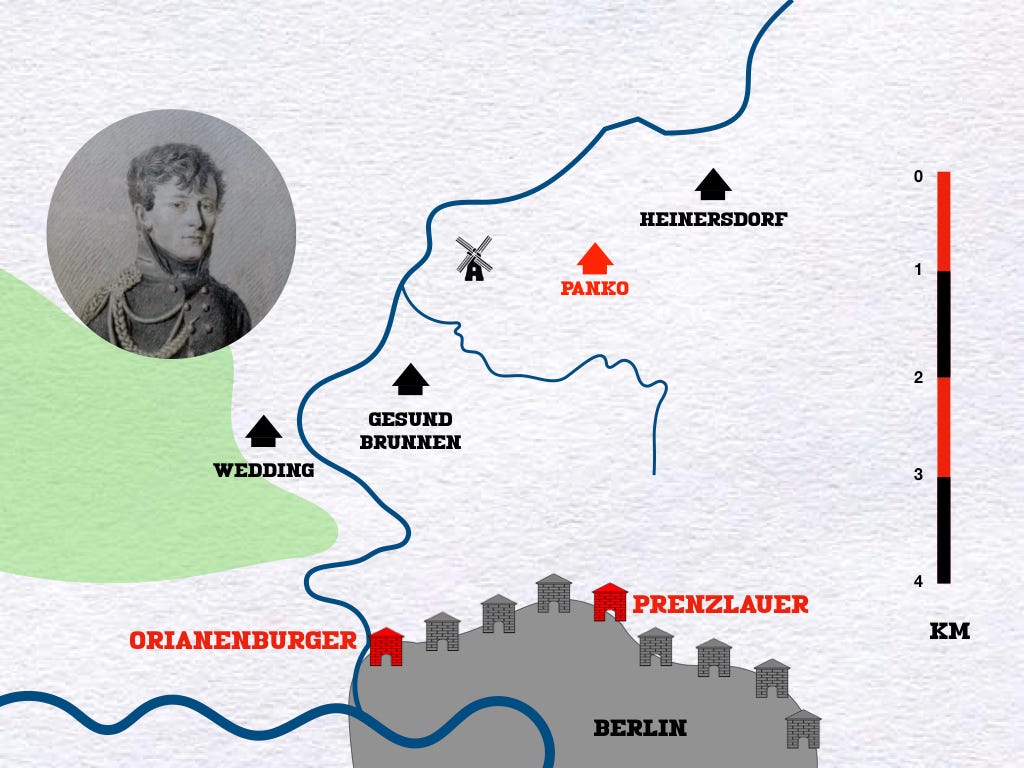Lieutenant von Clausewitz provided the following solution to the problem posed by Lieutenant Colonel von Scharnhorst.
It [the first patrol] moves across the Lisen [creek] along the Panko [river] towards [the village of] Wedding; sends one man into Wedding in order to bring one of the inhabitants to the NCO. The NCO seeks to discover from this person the location of enemy vedettes and sentries, and thus, possibly, whether or not Gesundbrunnen is occupied. Hereafter the patrol moves forward quietly so that it can reach Gesundbrunnen without being discovered by the enemy. There they hide themselves long enough so that, through observing the relief of sentries and the like, they can determine the presence of the enemy. If they are not discovered, one man approaches the houses in order to get a closer look. Whatever happens, they are not to return without either seeing the enemy or patrolling Gesundbrunnen.
The second [patrol] consists of as many infantrymen as the first, as well as three cavalrymen. They leave by means of the Prenzlauer Gate in order to reconnoiter Heinersdorf near [the village of] Panko. The cavalry halts in front of Heinersdorf while the infantry, after having made all possible investigations, avoids the sentries in order to cross the field and enter [the village of] Panko. With respect to further conduct they will receive the same instructions as the first [patrol.] The cavalry serves, in part, to quickly give word of any untoward occurrence, and, in part, to provide the infantry with moral support, so that they will advance with greater courage. They will not feel so alone.
If the patrols fail to return, then we can safely assume that the places in question are occupied by enemy forces. The men are to leave their packs behind and, when possible, are to wear dark coveralls [over their white breeches.] They are to receive a douceur [cash payment].
Editor’s commentary: It is worthy of note that, while obeying the letter of his instructions, Lieutenant von Clausewitz adopts an “indirect approach” to each of the villages he is charged with reconnoitering.
For further reading: Professor Paret sees the solution provided by Lieutenant von Clausewitz as the first sign of what would become a life-long fascination with psychological factors in war. See Peter Paret, Clausewitz in his Time (New York: Berghahn, 2015), pages 24 and 25
Source: This problem and its solution can be found in Werner Hallweg, editor, Schriften, Aufsätze, Studien, Briefe (Göttingen: Vandenhoeck und Rupprecht, 1966), Volume I, pages 57 and 58.





